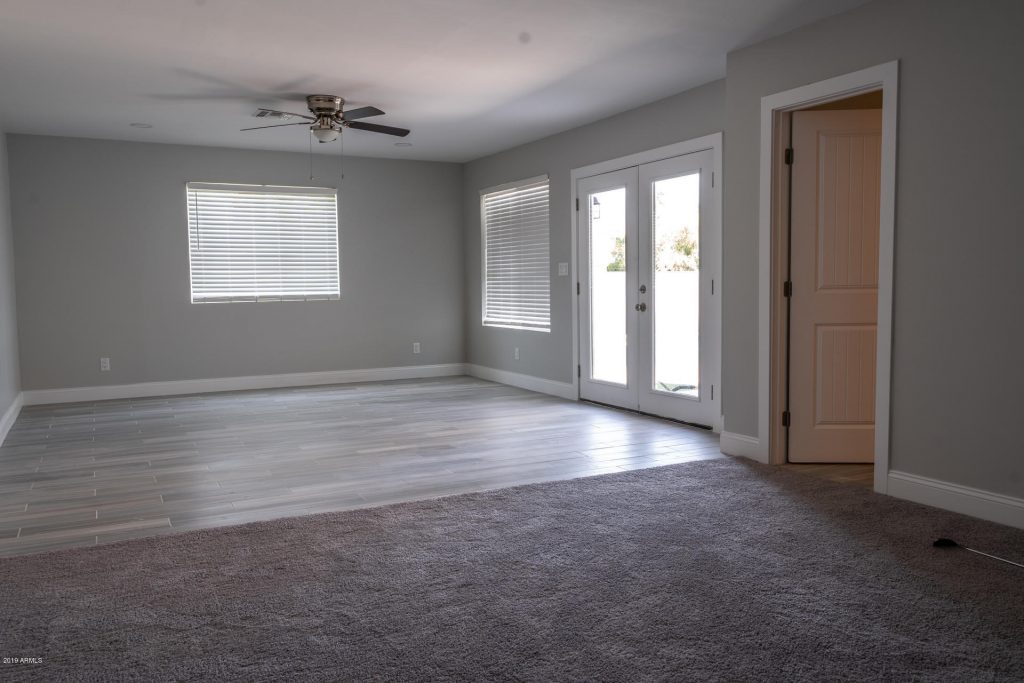Carpet is an excellent choice for a basement floor for various reasons. The carpet is warm and comforting, making it feel considerably cozier than the hard and cold cement floors found in most basements.
Carpet also has the advantage of not requiring a perfectly flat surface. Many basements have an unsteady floor, making tiling a basement challenge. On the other hand, Carpet is highly adaptable and can be installed on even the most uneven of surfaces.
Fibers in basement carpet
There are two types of carpet that are natural carpet and artificial carpet.
Artificial carpets
Artificial (man-made) fibers and natural fibers are the two types of carpet available. Both fibre kinds have benefits and drawbacks. Because of its great permeability, artificial carpet is the finest choice for a basement. In this situation, permeability refers to the carpet’s capacity to keep moisture out. Despite the moisture removal procedures outlined in the preceding section, the basement still has more dampness than other portions of the home. In this relative humidity climate, a synthetic carpet will assist prevent mould and mildew.
Natural carpets
Natural carpets aren’t suitable for a basement carpet since they soak too much moisture. Natural carpets have been shown to filter the air, which is undesirable. On the other hand, basements are nothing but a concrete-encased pit in the earth. Regardless of what precautions are taken, water will ultimately leak into a hole in the earth. Natural carpets soak more of this water, frequently without the landlord’s knowledge in the case of wool, increasing moisture. Contaminants will grow as a result of the increased dampness. It will also ruin the priceless natural carpet. Neither of these is something any owner wants to happen in their basement.
Read More: Basement Window Replacement: The Step-by-Step Guide
Best Basement Carpet Ideas
Repair any holes or defects in your existing floor and, if required, level it. Then think about how you’ll use the area. Choose straightforward flooring if there is a lot of foot activity from the outdoors. Consider an affordable carpet or rubber tiles to lighten things up if you’re trying for a pleasant playroom or family environment.
Rubber mats
Rubber and foam mats provide a nicer and softer plywood subfloor, and they’re generally less expensive than vinyl or linoleum. To keep mats together, most feature interlocking edges. They’re soft, robust, and durable, and the colors may be mixed and matched to create stunning patterns. Because you can quickly trim them to fit the area, they’re simple to install.
Traditional flooring
Carpet is both appealing and cost-effective. Indoor/outdoor carpet is generally the cheapest and easiest choice to place yourself. It’s also more moisture-resistant. This is available in rolls or squares with an epoxy adhesive, eliminating the need for mastic or concrete. The cost of a regular pile carpet is higher, so it is more prone to pollution and moisture issues. It does, however, aid in the softening of the basement level and the reduction of noise.
Concrete Paint and Epoxy
Paint is usually the cheapest choice for a basement floor. Use a high-quality epoxy, such as two different paints, and follow the company’s instructions to the letter. Sealing, etching, or other preparation is required for several epoxy resins and ceramic paints. You may change the appearance of the paint by combining colors to make it appear like granite or another stone.
Concrete stain
Another low-cost alternative is ceramic stain. Pigment is similar to paint in that it colors the ceramic by soaking into it, and it is generally completed with a protective sealant. Because it absorbs into the marble rather than merely modifying the surface, it lasts longer than paint, but it won’t disguise cracks or imperfections. Water-based concrete dyes are easy to apply using a brushes or roller.
Vinyl flooring
Linoleum and vinyl tile are popular choices for flooring. Both are easy to clean and come in a variety of colors and designs. Spread adhesive or thin-set cement on the floor and lay the tiles on top of it to attach either. Tile or linoleum may both be installed by oneself, although tiles are easier to place than large rolls of linoleum. Both are more costly than paint or stain, with prices varying substantially.
Ceramic flooring
Another nice option is ceramic tile. It is more costly than other solutions, but it lasts much longer. Ceramic tile can still save you money in the long term due to its durability. You may save money by utilizing bigger tiles and applying tile mastic yourself. Ceramic tile hides minor fractures and flaws in concrete, but it requires grouting between joints and sealing against spillage and humidity.
Engineered hardwood or laminate
Hardwood flooring in the basement is not a good option since it might harbor mould. Choose laminate flooring if you just want the beauty of wood without the hazards. Because the components snap together, laminate and manufactured hardwood flooring resist dampness and are simple to install. Marble and ceramic can also be imitated with laminate flooring. Laminate is available at a variety of pricing points, making it feasible to install laminate on a budget while yet achieving the appearance of a high-end finish.
Stained concrete
If your home is constructed on a concrete block, you may be able to stain the concrete for a unique and easy-to-care-for look. In the West and South, stained concrete is the preferred material for high-end residences. It can be scraped to resemble tile or polished to give it a rich appearance. Concrete staining entails numerous stages, involving surface polishing and etching. Kits are available from internet sites and flooring specialist stores, and you may complete the work yourself.
Other options
Choose peel-and-stick wooden floors or carpet pieces if you need to fully replace your flooring. For less expensive flooring alternatives in smaller rooms, check for carpet scraps or boxes of expired wood flooring at cheap prices.

